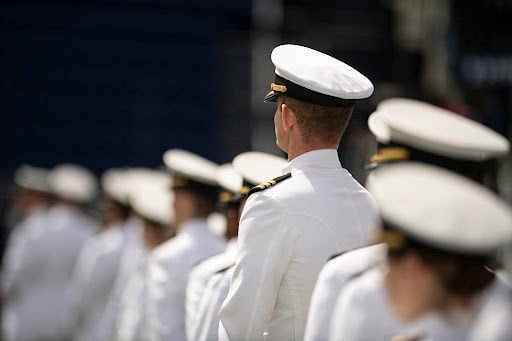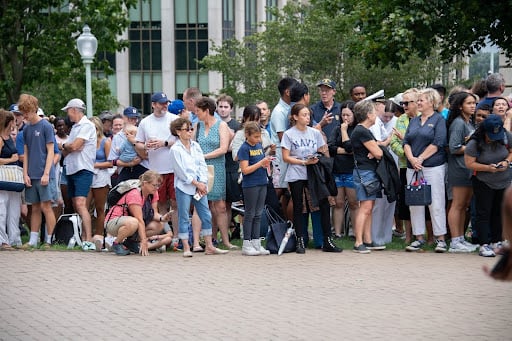If you’re looking for one of the most intense, high-stakes Navy officer jobs out there, look no further than Navy Explosive Ordnance Disposal (EOD). These officers don’t just serve—they tackle some of the most dangerous challenges on the planet head-on. Whether defusing an improvised explosive device, identifying threats in the field, or supporting global missions with unmatched skill and bravery, Navy EOD Officers are elite professionals on the front lines of safety and national security.
What Is a Navy Explosive Ordnance Disposal Officer?
A Navy EOD Officer is a calm, focused problem-solver trained to identify, neutralize, and eliminate threats posed by explosive devices—including chemical, biological, radiological, nuclear, and improvised explosive devices (IEDs). Whether operating underwater, on land, or in the air, they use cutting-edge tools, dive capabilities, and advanced robotics to protect personnel and clear the way for mission success.
The job demands physical grit, mental agility, and emotional resilience. Navy EOD Officers work alongside small, tight-knit teams, and are often deployed in fast-moving environments, supporting everything from special forces to humanitarian missions. Since explosive disposal is a regular task, it’s a role for those who thrive under pressure and are motivated by purpose.
Related: Service Assignment Spotlight: Navy Surface Warfare Officer.
How Midshipmen Pursue This Path
At the U.S. Naval Academy, some midshipmen arrive knowing they want to join the Navy EOD community, while others discover the calling during their Academy journey. Either way, the selection process is highly competitive. The USNA EOD accessions begin with this series of steps:
Step One: Candidates must successfully complete the EOD Screeners. There are two screeners per academic year (fall and spring). Approximately 24 hours each, these evaluations are designed to test and challenge the limits of a midshipman's grit, teamwork, and physical skills, in stressful and high-intensity situations, to determine if they would be a good fit for the community. Much of this rigorous test takes place in the pool to determine water comfortability and gauge how midshipmen would perform in subsequent dive school situations, if they make it to that level.
It includes arduous land-based evaluations as well. Evaluators track midshipmen performance and metrics (both tangible and intangible) throughout, in order to then “rack and stack” those who successfully finish for the next step in the accessions process. Active duty EOD technicians from Little Creek, Virginia, travel to the USNA for the Screener weekends to help facilitate the EOD Screener alongside the USNA EOD Program. Administrators interview Screener finishers to evaluate them holistically outside of a physical environment and determine their fit for the EOD community.
Step Two: Those who pass the EOD Screener, have a good interview, and meet criteria and metrics for the allotted cut-off slots will earn a spot on the EOD Summer Cruise for their 1/C summer training. This cruise is a four-week evaluation at Joint Expeditionary Base (JEB) - Little Creek in Virginia Beach at the EOD Mobile Units, during which administrators conduct more physical testing and evaluation, hands-on EOD evaluations and experiences, and critical thinking/problem solving/teamwork assessment-based tests.
Active duty EOD technicians stationed at JEB Little Creek run the cruise, which is essentially a four-week intensive "job interview" where midshipmen are assessed daily. Ranking EOD technicians conduct several interviews, which comprise the continuing whole person evaluation. “EOD Cruise gives us a true look at the midshipmen working in teams and how well they mesh with the EOD Community. We like to say, as much as the midshipmen candidates are trying out for EOD—EOD is also trying out for them. It must be the right fit, especially since our teams are small units of action,” says the USNA Deputy EOD Program Manager.
Step Three: Candidates that pass this portion of the evaluation are again racked and stacked across all other candidates. Based on number allotments for selectees afforded that year, a certain number get an interview slot; these occur at the Naval Academy every September. Conducted as an in-person interview in front of a board of EOD technicians chaired by the Explosive Ordnance Disposal Group Commodore, candidates talk with members of varying ranks and levels of EOD leadership. Detailers and officer community managers also facilitate this board. The process is very formal and extremely competitive. The board is different each year, and they are the voting authority on selection. By the interview step, the candidates have been seriously vetted and screened, so the interview process sorts out the best of the best.
After Graduation: The Real Work Begins
Once commissioned, future EOD Officers undergo a rigorous two-year training pipeline:
After commissioning, these candidates get a permanent change of station (PCS) to Naval Diving Salvage Training Center (NDSTC) in Panama City Beach, Florida, for the Joint Diving Officer (JDO) course. “JDO is approximately six months of ‘dive school,’ which encompasses SCUBA diving, surface supplied diving, diving medicine, dive physics, salvage operations, mixed-gas diving, and rebreather diving. Dive school is again physically and team-work intensive, which sets the foundation for the EOD skills needed to be a successful officer.”
Next, students PCS to Eglin Air Force Base, Florida, to Naval School Explosive Ordnance Disposal (NAVSCOLEOD), which is approximately one year and is centered on critical thinking, problem solving, and threat assessment, under the tutelage of an EOD technician. To complete this segment, candidates undergo Underwater Division for Navy students, which is again diving and teamwork intensive.
Then, students earn their basic EOD technician badge and take on approximately six months of follow-on training, including Static Line Jump School in Fort Benning, Georgia, Expeditionary Combat Skills Training in Gulfport, Mississippi, and Tactical Training in San Diego, California. Students must also complete Survival Evasion Resistance Escape Course (SERE) and Military Freefall School (MFF).
Finally, EOD technicians report to their first EOD Mobile Unit (EODMU). It may be on the East Coast (Little Creek, VA), West Coast (San Diego, CA), or overseas in Guam or Spain. Once they arrive at their EODMU, EOD Officers will be assigned as platoon commanders of small units of action and begin the required training cycles for certification for deployment.
Related: USNA Service Assignment Spotlight: Navy Submarines
What EOD Officers Do in the Field
There’s no “typical day” in the life of a Navy EOD Officer. One day, they might disarm an improvised explosive device in a war zone. The next, they could support a SEAL team, clear a path for humanitarian aid, or help recover sensitive equipment from the ocean floor.
Their gear includes dive systems, robotics, bomb suits, and specialized detection tools. But what truly differentiates EOD Officers is their adaptability and training. These officers are mission enablers—ensuring the rest of the Navy can operate safely.
As the USNA Deputy EOD Program Manager puts it, “We are the ultimate enablers which allow for other assets to safely perform their duties…. Our small footprint combined with high-impact capabilities is what really sets us apart. EOD technicians are known for doing more with less.”
Supporting the Future of the EOD Community
At the Naval Academy, our goal is to prepare future leaders for critical roles like Navy EOD officers. Thanks to support from the Naval Academy Business Services Division (NABSD), midshipmen have access to diverse extracurricular activities like the arts, music, theater, club sports, and more that help build the well-rounded skills they need for success.
When you shop, dine, or tour on the Yard, your support goes directly to the Brigade of Midshipmen, fueling their growth into tomorrow’s Navy leaders.
So next time you're exploring Navy officer jobs, know that EOD is more than just an impressive career path—it's a true calling. And your support helps make it possible.
-1.png)










